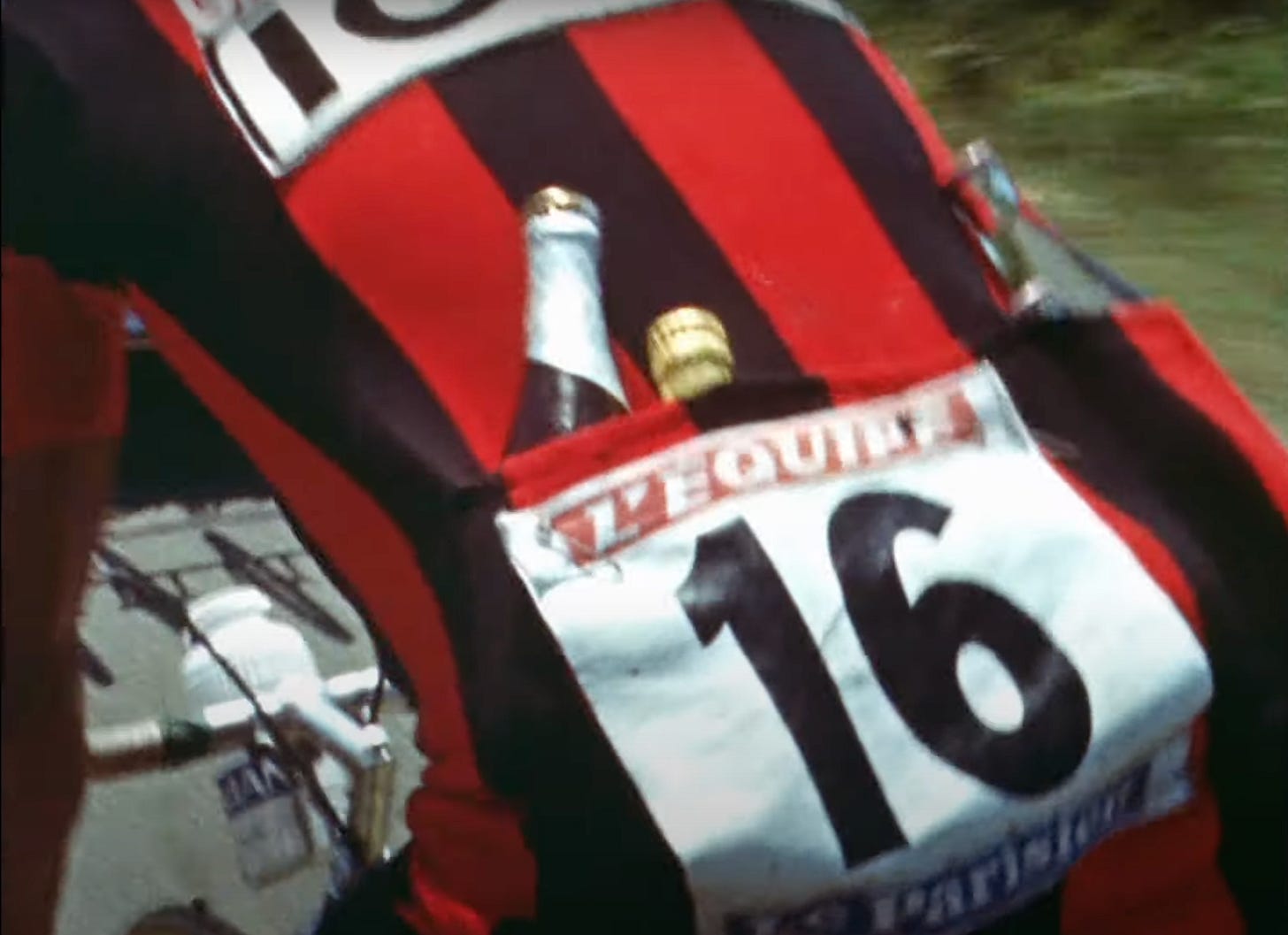It’s the Tour De France! Time to…Raid a Café?
The wild history of how racers on the Tour de France have fueled up throughout history.
From climbing the Alps to racing across rows of sunflowers to sprinting down the Champs-Élysées, there are few more iconic or picturesque sporting events than the Tour de France. This year’s edition is one of the most exciting in recent history (don’t just take my word for it), but as I’ve been following the coverage, I came across a bit of history that sent me spiraling down a rabbit hole I never saw coming—one that feels fitting to discuss on a Friday. Would you care to join me on a trip through sports history?
Cycling’s most hallowed race was first organized 109 years ago in 1903. Before the wealthy teams and massage tents that make up race today, the Tour had a more bespoke feel: just a jaunt through the country on a bike. That first race featured stages that pushed riders 250 miles at a time (the longest stage nowadays is 145), and if anyone had a problem with their bike, they had to fix it themselves. If they had a flat tire, they had to stop, get out some tools, and tinker until their bike was road-ready once again.
But nothing is quite as unbelievable as the way that cyclists used to eat and drink. Watch the below clip from director Louis Malle’s 1962 documentary Vive La Tour.
That’s right—whenever racers needed refreshments in the sixties, they organized “drinking raids.” Bikes were thrown to the ground. Spectators shoved aside. Cafés all across France ransacked by the world’s greatest athletes. “It isn't quite looting, but they demand and take everything: red wine, champagne, beer,” says the narrator of the film. “Even water, if there's nothing better.”
Then they would hop back on their bikes, the pockets on the back of their jerseys stuffed full of glass beer and champagne bottles. They’d ride and pass around beers for other rides to swig from, or a group of racers would finish an ice cream bar with everybody taking one bite each.
When the Tour finished, the race director received exorbitant invoices from café owners across the country: 21 Kronenbourgs, nine bottles of Dom Perignon, 11 bottles of fine burgundy reds, six pieces of brie, and two baguettes.
The idea was simple. When you ride, you sweat, and when you sweat, you need to rehydrate somehow. Before Gatorade, some considered beer to be the next best thing. It was cold, refreshing, and, athletes believed, it gave them more energy as they continued the race.
Yet the drinking raids of the 60’s are but one chapter in a grand tradition of champions winning the Tour de France with diets that can only be described as…extraordinaire. Henri Cornet, the race’s second ever champion, consumed 11 liters of hot chocolate, four liters of tea, an undisclosed amount of champagne, and 3.5 pounds of rice pudding every day while racing—because who needs protein? In the 1910s, one racer came from a particularly affluent background; every day throughout the Tour, his butler would set up an extravagant picnic where he would dine. In 1935, the entire peloton (or group of riders) stopped in a village to toast the locals with some ales. Only one rider, Julien Moineau, kept going—and he won the stage. As late as the 1980s, cyclists would chug Coca-Cola after each stage, because they believed it helped their recovery.
These days, riders have entire teams of chefs and nutritionists that follow them throughout the 21 stages. They balance carbs, proteins, and natural sugars. It leads to better performances. But who wouldn’t love it if the best cyclists of today continued raiding cafés for cold ones?
A word of warning before the weekend: Last summer, researchers investigated how beer consumption affected athletic performance. I’m very sorry to report that consuming beer at any point before, during, or after activity leads to a decrease in performance and hydration.
Don’t shoot the messenger.
👟 One of the more stunning sports stories I’ve heard in some time. Earlier this week, Sir Mo Farrah, the great distance runner, revealed that he was trafficked into the UK as a child and forced to work as a domestic servant.
🏌️♂️ Is this the next Tiger Woods? Cuteness alert.
🇺🇦 Meet the Ukranian athletes representing their country at this weekend’s track and field world championships.
🤨 Speaking of the world championships, I loved this story from Rachel Bachman in the Wall Street Journal. She caught up with some of the best sprinters alive and discovered that, yes, people approach them all the time asking them to race. “We’re in the middle of the mall,” says Christian Coleman, the reigning 100 meter champion. “It’s like, obviously not.”
🥇 And one more in the track world. At long last, nearly a century late, the IOC has restored the great Jim Thorpe as the sole gold medalist in the 1912 pentathlon and decathlon. He had been stripped of his medals when it was discovered that he had once earned some money playing semi-professional basketball before the Olympics. For more on Thorpe, Pulitzer winner David Maraniss has a new biography coming out in a few weeks about the man that might just be the greatest athlete the world has ever known.









